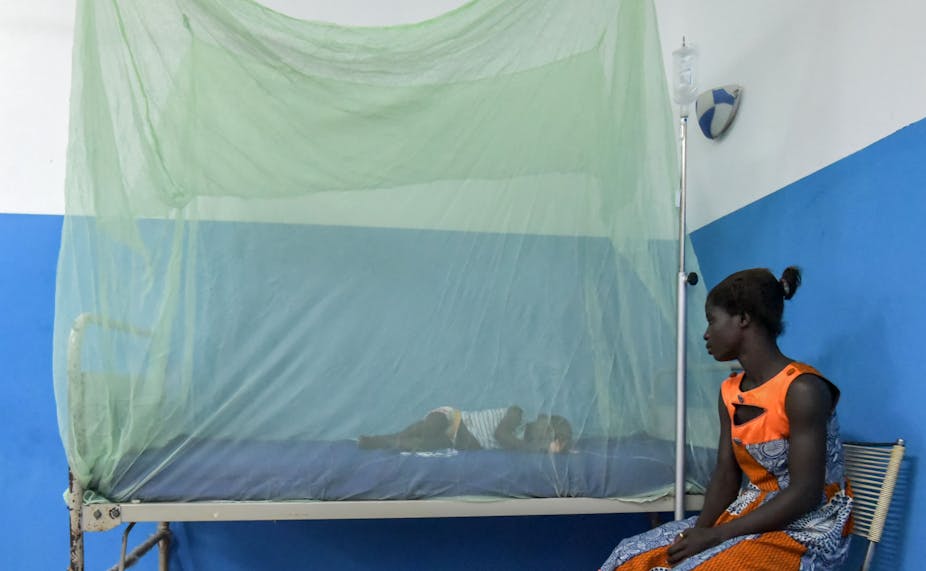The approval of two malaria vaccines – the RTS,S/AS01 vaccine in 2021 and the R21/Matrix-MTM vaccine in 2023 – will help control, and eventually help eradicate, a disease that causes more than 600,000 deaths annually.
Nearly 2 million children in Ghana, Kenya and Malawi have been vaccinated with the RTS,S/AS01 vaccine. It will be rolled out to more African countries from early next year.
The second vaccine, R21/Matrix-MTM, approved by the World Health Organization in October, will be ready for rollout in mid-2024.
Rose Leke, winner of the 2023 Virchow Prize for her lifetime achievement in strengthening global health and a prominent voice in vaccine protocols, sheds light on the breakthroughs.
Why are the vaccines significant for Africa?
There are about 40 million children born every year in malaria areas in Africa who would benefit from a vaccine.
The RTS,S/AS01 vaccine reduces malaria deaths by 30% and is especially important for children, who are most at risk from malaria. If you had 100 children who would die from severe malaria, you could save 30.
Mothers who have had their children vaccinated in the pilot phase have expressed appreciation for the vaccine because it has prevented their children from dying of severe malaria.
The second vaccine, R21/Matrix-M, is highly effective, reducing cases of malaria by 75%. Hundreds of millions of doses of this vaccine can be produced each year.
It will be ready for rollout as early as mid-2024
These two vaccines are new tools, but they have to be used with the other measures we have against malaria. These include bed nets and the administration of antimalarials to children at the highest risk of malaria at specific times throughout the year.
If we add the vaccine on top of these measures effectively, we may move further towards malaria elimination.
Read more: 'We could eradicate malaria by 2040' says expert after revolutionary vaccine is approved by WHO
How can all communities benefit?
There is great demand for malaria vaccines. The demand is estimated to be 40 to 60 million doses by 2026 alone.
Gavi, the Vaccine Alliance, has given the nod to Benin, the Democratic Republic of Congo and Uganda among 12 countries in Africa to receive the first doses of the vaccine. They will be allocated a total of 18 million vaccines for the period up to 2025.
Gavi is an international organisation created in 2000 to improve access to new and underused vaccines for children living in the world’s poorest countries.
So as you can see demand has been far greater than supply. When we had just one vaccine, the RTS/S, quantities were limited, and the WHO had to develop an equitable framework for the distribution of the limited doses.
Countries were categorised. Those in category 1 were most in need and the first to be vaccinated.
I was a little bit worried about this. If somebody came to my country, and they were vaccinating in a category 1 village and 20km away, in a category 2 village, a child could not get the vaccine, that would cause a problem socially and even politically.
I was co-chair of the WHO panel looking into this. We spent a lot of time on the framework, trying to work out who gets it and who doesn’t.
These are the principles we followed:
Areas of greatest need: where the malaria disease burden in children is highest and the risk of death is highest.
Where the expected health impact is greatest: where most lives can be saved with the limited available doses.
Countries that committed to fairness in their vaccination programmes.
One of the criteria was that once the new vaccine was introduced through routine public health services in a certain area, continuous and sustainable access needed to be maintained.
Why is local manufacturing so important?
During COVID, we saw that Africa was at the back of the queue. The best way to secure supply is to make it yourself.
That’s why vaccine manufacturing in Africa is one of the Africa Centres for Disease Control’s biggest priorities.
I hope that in my lifetime I will see some of these vaccines being produced on the continent.
Not all people want the vaccinations, do they?
My experience in Africa is that routine immunisation coverage is still quite low. Now we’re going to add this new malaria vaccine. If we have low vaccination rates, we will never get the impact we want.
So we always have to encourage mothers to take the children for vaccinations, and vaccine hesitancy should really be stopped.
There’s the belief that these foreign vaccines are coming to kill the children. But what haven’t we imported? Is it milk? Is it soap? Is it sardines?
Why is it only with vaccines that people have these theories?
Vaccines have been so effective, the impact on the African continent has been so great.
Most of us, even me and you, might have been gone without vaccines. We need to inform people to get rid of this vaccine hesitancy that we have all over the continent.
This article is part of a media partnership between The Conversation Africa and the 2023 Conference on Public Health in Africa.

